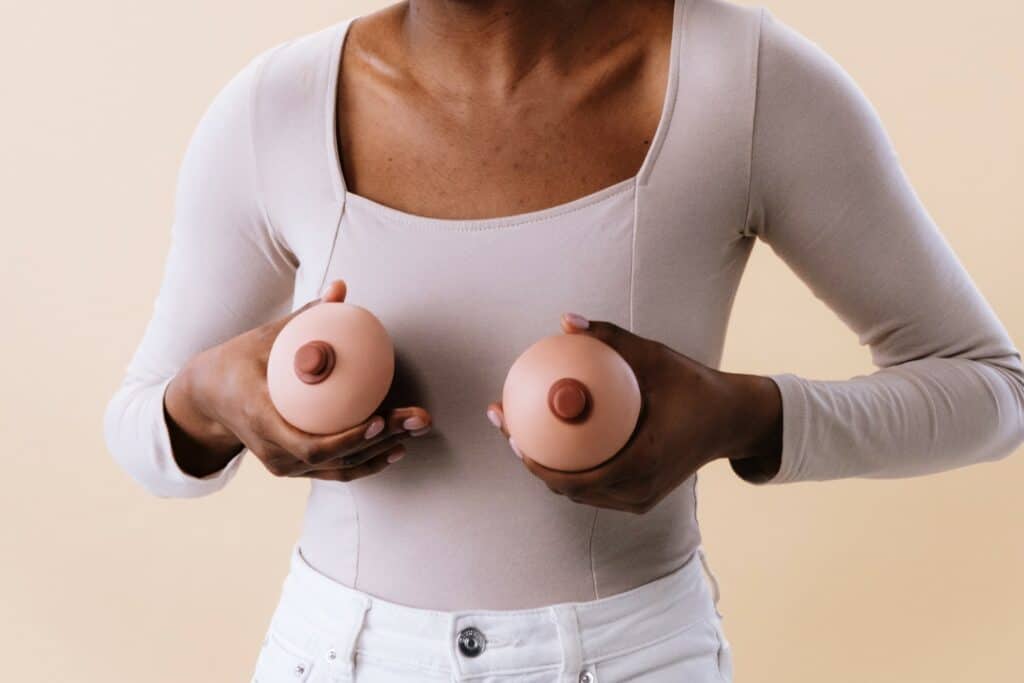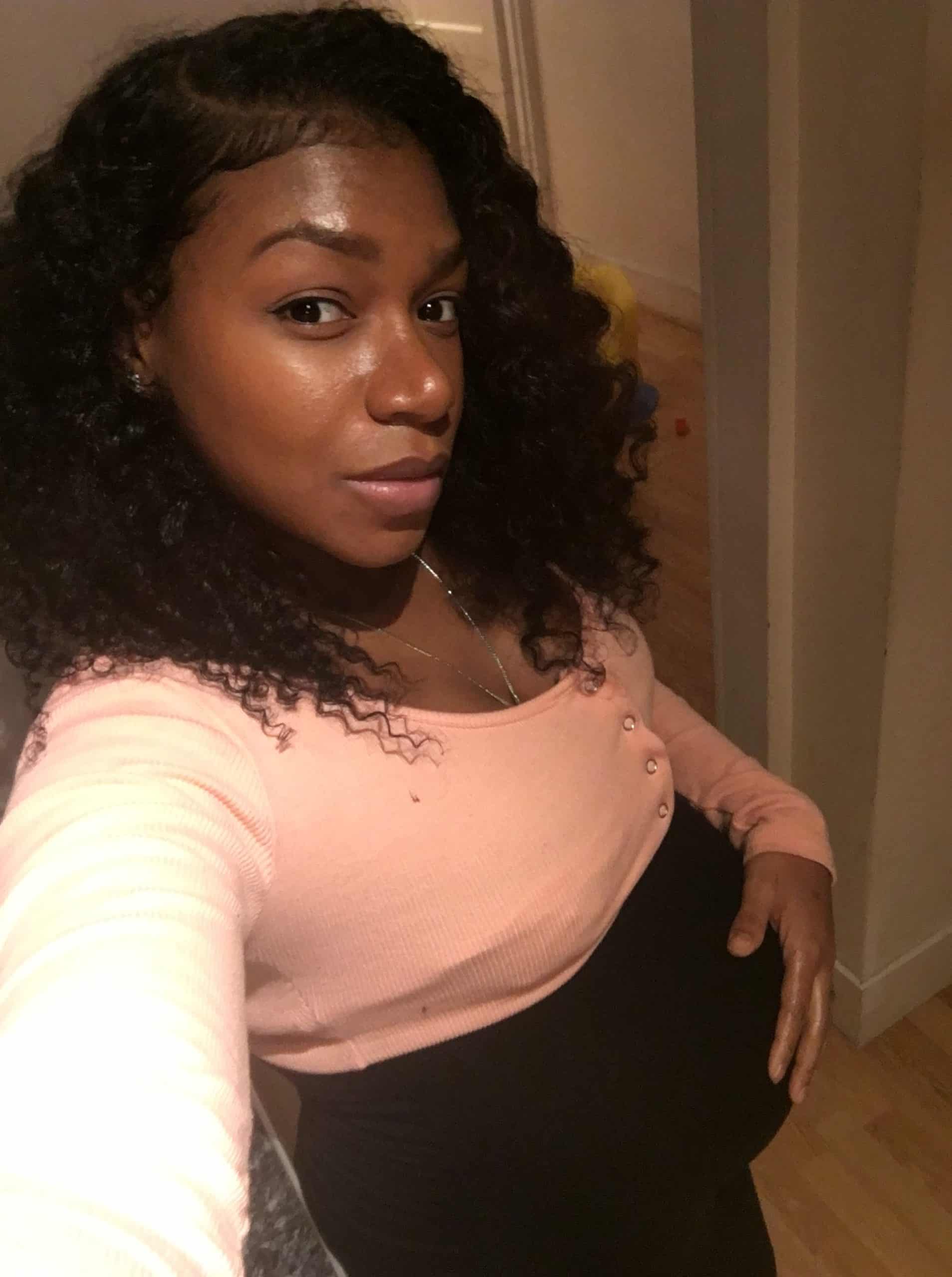Lipstick shaped nipples are a common topic of discussion among new mothers. These nipples are characterized by a raised, elongated appearance that resembles the shape of a lipstick tube. While some women may be concerned about the appearance of their nipples, it’s important to understand that lipstick shaped nipples are a normal variation and do not affect breastfeeding ability.
Understanding Lipstick Shaped Nipples is an important part of preparing for breastfeeding. While the shape of the nipple may look different, it does not necessarily mean that breastfeeding will be more difficult. In fact, many women with lipstick shaped nipples are able to breastfeed successfully with proper latching and positioning techniques.
Key Takeaways
- Lipstick shaped nipples are a normal variation and do not affect breastfeeding ability.
- Understanding proper latching and positioning techniques can help ensure successful breastfeeding with lipstick shaped nipples.
- It’s important for new mothers to be aware of the variations in nipple shape and seek support from a professional if needed.
Understanding Lipstick Shaped Nipples
Lipstick shaped nipples are a unique nipple shape that is characterized by a protrusion of the nipple that resembles the shape of a lipstick. This type of nipple shape is not very common, but it is not rare either. In this section, we will explore the characteristics of lipstick shaped nipples and how they differ from other nipple shapes.

Characteristics of Lipstick Shaped Nipples
Lipstick shaped nipples are characterized by a long and slender protrusion that resembles the shape of a lipstick. The nipple is usually pointed and extends outwards from the areola. This type of nipple shape is often associated with a smaller areola size. Lipstick shaped nipples are typically more sensitive than other nipple shapes due to the increased nerve endings in the protruding tip.
Differences from Other Nipple Shapes
Lipstick shaped nipples differ from other nipple shapes in several ways. For example, inverted nipples have a depression in the center instead of protruding outwards. Flat nipples are characterized by a lack of protrusion, while puffy nipples have a raised areola and a protruding nipple. Lipstick shaped nipples are unique in that they have a long and slender protrusion that extends outwards.
Causes of Lipstick Shaped Nipples
There is no known cause for lipstick shaped nipples. Nipple shape is largely determined by genetics and can vary from person to person. Hormonal changes during puberty and pregnancy can also affect nipple shape.
Lipstick Nipples and Breastfeeding
Lipstick shaped nipples can make it more difficult for a baby to latch on during breastfeeding. However, with the right techniques and support, breastfeeding is still possible with this nipple shape. Using a breast pump to stimulate milk production can also be helpful for mothers with lipstick shaped nipples.
In conclusion, lipstick shaped nipples are a unique nipple shape that is characterized by a long and slender protrusion that resembles the shape of a lipstick. This type of nipple shape is not very common, but it is not rare either. While there is no known cause for lipstick shaped nipples, they can make breastfeeding more challenging. However, with the right techniques and support, breastfeeding is still possible with this nipple shape.
The Importance of Proper Latching
Breastfeeding is a natural and beautiful way for a mother to nourish her baby. However, it can be challenging, especially when it comes to getting a good latch. A proper latch is essential for a successful breastfeeding experience, and it can prevent discomfort, nipple pain, and even nipple damage. In this section, we will discuss the importance of proper latching and how to identify a good or poor latch.

Signs of a Good Latch
A good latch is when the baby’s mouth is wide open, and the lips are flanged outward. The baby’s chin is pressed into the breast, and the nose is slightly touching the breast. When the baby is latched correctly, the mother should feel a tugging sensation, but there should be no pain or discomfort. Here are some signs to look for to determine if the latch is good:
- The baby’s mouth covers a large portion of the areola.
- The baby’s lips are flanged outward.
- The baby’s chin is pressed into the breast.
- The baby’s nose is slightly touching the breast.
- The baby’s cheeks are full and rounded.
- The mother feels a tugging sensation but no pain or discomfort.
Identifying a Poor Latch
A poor latch can cause pain, discomfort, and even nipple damage. It can also lead to poor milk transfer, which can result in a decrease in milk supply. Here are some signs to look for to determine if the latch is poor:
- The baby’s mouth is not open wide enough.
- The baby’s lips are not flanged outward.
- The baby’s chin is not pressed into the breast.
- The baby’s nose is not touching the breast.
- The baby’s cheeks are dimpled or sucked in.
- The mother feels pain or discomfort.
If the latch is poor, the mother should unlatch the baby and try again. It may take a few tries to get a good latch, but it’s worth the effort. A good latch is essential for a successful breastfeeding experience.
In conclusion, proper latching is crucial for successful breastfeeding. A good latch can prevent discomfort, nipple pain, and even nipple damage. It can also ensure proper milk transfer, which is essential for maintaining milk supply. By identifying the signs of a good or poor latch, mothers can ensure that their babies are getting the nourishment they need while also enjoying a comfortable and pain-free breastfeeding experience.
Breastfeeding Positions and Techniques

The Laid-Back Position
The laid-back position, also known as the biological nurturing position, is a comfortable and relaxed breastfeeding position that allows the baby to find the breast and latch on by themselves. The mother lies back on a comfortable surface, such as a bed or a couch, with her back supported and her legs slightly bent. The baby is placed on top of the mother’s chest, with their head facing the breast. This position allows the baby to use their natural instincts to find the breast and latch on. The mother can use her hands to support the baby’s head and neck, but otherwise, there is no need to hold the baby in place.
Trial and Error Approach
Finding the right breastfeeding position can take some trial and error, as every mother and baby are different. Some babies prefer certain positions, while others may find them uncomfortable or difficult to latch on. It is important to experiment with different positions until you find one that works for you and your baby. Some common breastfeeding positions include the cradle hold, the football hold, and the cross-cradle hold. Each position has its own advantages and disadvantages, and what works for one mother and baby may not work for another.
Using a Nursing Pillow
A nursing pillow can be a helpful tool for finding a comfortable breastfeeding position. Nursing pillows come in a variety of shapes and sizes, and can be used to support the baby’s head and neck, as well as the mother’s arms and back. A nursing pillow can also help to bring the baby closer to the breast, which can make it easier for them to latch on. However, it is important to remember that a nursing pillow is not necessary for breastfeeding, and many mothers find that they are able to breastfeed comfortably without one.
In conclusion, there are many different breastfeeding positions and techniques that can help to make breastfeeding a comfortable and enjoyable experience for both the mother and the baby. By experimenting with different positions and using tools such as nursing pillows, mothers can find the position that works best for them and their baby.
Potential Challenges and Solutions
Breastfeeding with lipstick-shaped nipples can present some challenges for new mothers. However, with the right approach and support, these challenges can be overcome. Here are some potential issues that mothers may face and some solutions to address them.
Dealing with Pain and Discomfort
Mothers with lipstick-shaped nipples may experience pain and discomfort during breastfeeding. This can be due to the shape of the nipple, which can make it difficult for the baby to latch on properly. Pain and discomfort can also be caused by other factors, such as thrush, mastitis, or cracked nipples.
To address pain and discomfort, mothers can try different breastfeeding positions, such as the football hold or the cross-cradle hold, which can help the baby latch on properly. Mothers can also use nipple shields to help the baby latch on and protect sore nipples. Using lanolin cream can also help to soothe sore and cracked nipples.
Addressing Insufficient Milk Supply
Mothers with lipstick-shaped nipples may also face challenges with milk supply. Insufficient milk supply can be caused by a variety of factors, such as stress, dehydration, or hormonal imbalances. It can also be caused by the baby not latching on properly.
To address insufficient milk supply, mothers can try different breastfeeding positions to help the baby latch on properly. Mothers can also try to reduce stress and stay hydrated. If these measures do not work, mothers can consider using a breast pump to stimulate milk production or taking supplements to increase milk supply.
Managing Sore and Bleeding Nipples
Mothers with lipstick-shaped nipples may also experience sore and bleeding nipples. This can be caused by the baby not latching on properly or by other factors, such as thrush or mastitis.
To manage sore and bleeding nipples, mothers can try different breastfeeding positions to help the baby latch on properly. Mothers can also use nipple shields to protect sore nipples. Using lanolin cream can also help to soothe sore and cracked nipples. If the nipples are bleeding, mothers should consult with a healthcare provider.
Treating Thrush and Mastitis
Mothers with lipstick-shaped nipples may also be at a higher risk of developing thrush or mastitis. Thrush is a yeast infection that can affect the nipples and cause pain and discomfort. Mastitis is an infection of the breast tissue that can cause pain, swelling, and redness.
To treat thrush and mastitis, mothers should consult with a healthcare provider. Treatment may include antibiotics or antifungal medication. Mothers should also continue to breastfeed to help clear the infection and prevent further complications.
In conclusion, breastfeeding with lipstick-shaped nipples can present some challenges for new mothers. However, with the right approach and support, these challenges can be overcome. Mothers should consult with a healthcare provider if they experience pain, discomfort, or other side effects.
When to Consult a Professional
If a person notices that their nipples are shaped like lipstick, it is important to consult a professional for further evaluation. While this condition is not usually harmful, it can make breastfeeding difficult and uncomfortable for both the mother and child. Here are some professionals that can provide assistance:

Seeing a Pediatrician
If a person notices that their baby is having difficulty latching onto their nipple, it may be necessary to see a pediatrician. A pediatrician can evaluate the baby for tongue tie or lip tie, which can make it difficult for them to latch onto the nipple. They can also provide guidance on using a nipple shield, which can help the baby latch onto the nipple more easily.
Visiting a Pediatric Dentist
If a person is experiencing pain or discomfort while breastfeeding, they may need to see a pediatric dentist. A pediatric dentist can evaluate the baby’s mouth for any issues that may be causing the problem. They can also provide guidance on how to properly position the baby during breastfeeding to help prevent pain and discomfort.
Working with a Lactation Specialist
If a person is having difficulty breastfeeding their baby, they may need to work with a lactation specialist. A lactation specialist can provide guidance on how to properly latch the baby onto the nipple, as well as how to use a nipple shield or other breastfeeding aids. They can also provide advice on how to increase milk supply and how to prevent and treat common breastfeeding problems.
In conclusion, if a person notices that their nipples are shaped like lipstick, it is important to consult a professional for further evaluation. By working with a pediatrician, pediatric dentist, or lactation specialist, a person can get the help they need to make breastfeeding a comfortable and enjoyable experience for both themselves and their baby.
Understanding Your Baby’s Behaviour
Recognizing a Hungry Baby
One of the most common reasons for a baby to become fussy is hunger. Newborn babies have tiny stomachs and need to be fed frequently. Signs that your baby may be hungry include smacking lips, sucking on fists or fingers, and rooting. Rooting is when a baby turns their head and opens their mouth when you stroke their cheek. It is important to feed your baby on demand and let them lead the way.
Interpreting Fussy Behaviour
Sometimes babies become fussy for reasons other than hunger. They may be uncomfortable, tired, or overstimulated. If your baby is fussy, try to identify the cause and address it. For example, if your baby is too hot or too cold, adjust their clothing or the room temperature. If your baby is overstimulated, try to create a calm and quiet environment.
Identifying a Quiet and Content Baby
A quiet and content baby is a good sign that they are getting enough to eat and are comfortable. Babies who are nursing well will have a strong suck and swallow pattern. You should be able to see their chin and tongue moving as they nurse. As your baby grows and gains weight, they should become more content and less fussy.
Remember that every baby is different and may have their own unique behaviours and preferences. Pay attention to your baby’s cues and respond to their needs. This will help you build a strong bond with your baby and ensure that they are happy and healthy.
The Importance of Skin-to-Skin Contact
Skin-to-skin contact is a vital aspect of human development, particularly in infants. It involves placing a baby, naked except for a diaper, on the bare chest of the mother or father, with a blanket over both to keep warm. This contact is essential for the baby’s physical and emotional well-being, and it has a significant impact on the mother’s health as well.

The benefits of skin-to-skin contact for infants are numerous. It helps regulate their body temperature, heart rate, and breathing, and it can reduce their stress levels. It also promotes the release of hormones that aid in digestion, sleep, and growth. Additionally, skin-to-skin contact has been shown to improve breastfeeding success rates and increase maternal attachment.
Skin-to-skin contact is not just beneficial for newborns; it can have positive effects on people of all ages. It has been shown to reduce pain and stress levels in adults and can improve the healing process for wounds. It can also be a powerful tool for enhancing emotional connections between partners, friends, and family members.
In conclusion, skin-to-skin contact is an essential component of human development and has numerous benefits for both infants and adults. It promotes physical and emotional well-being and can enhance bonding and attachment between individuals. It is a simple and natural practice that can have a profound impact on our lives.
Maintaining Breast Health
Breast health is important for overall health and well-being. It is important to maintain healthy breasts to prevent any medical issues or complications. Here are some tips to maintain breast health:
Breast Tissue
Breast tissue is made up of glandular tissue and fatty tissue. It is important to maintain a healthy weight and exercise regularly to keep breast tissue healthy. Women with larger breasts may experience back pain, so it is important to wear a supportive bra.
Areolas
Areolas are the darker area around the nipple. It is important to keep the areolas clean to prevent bacterial infection. Women who are breastfeeding should clean their nipples and areolas before and after each feeding to prevent breastfeeding complications.
Medical Issues
It is important to see a doctor if there are any changes in the breasts. Women should perform self-examinations regularly to check for any lumps or changes in the breast tissue. Early detection of any medical issues can lead to better outcomes.
Patience
Breast health is a journey, and it takes time and patience to maintain healthy breasts. Women should be patient and consistent with their breast health routine.
In conclusion, maintaining breast health is important for overall health and well-being. Women should take care of their breasts by maintaining a healthy weight, wearing a supportive bra, keeping the areolas clean, performing self-examinations regularly, and seeing a doctor if there are any changes in the breasts.
Related Posts:
Frequently Asked Questions
What is the typical shape of a nipple?
The typical shape of a nipple can vary from person to person. Some nipples may be flat or inverted, while others may be more protruding. It’s important to note that all nipple shapes are normal and can be suitable for breastfeeding.
How can I ensure a good latch while breastfeeding?
To ensure a good latch while breastfeeding, it’s important to position the baby correctly. The baby should be facing the breast with their head and body in a straight line. The baby’s mouth should be wide open, with their lips flanged out. The nipple should be placed in the baby’s mouth with their tongue underneath it.
What are some common causes of breastfeeding difficulties?
Some common causes of breastfeeding difficulties include a poor latch, nipple pain or damage, engorgement, mastitis, and low milk supply. Seeking support from a lactation consultant or healthcare provider can help address these issues.
What is the best way to correct a shallow latch?
To correct a shallow latch, it’s important to break the suction by inserting a clean finger into the baby’s mouth and gently removing the nipple. Then, reposition the baby with their mouth wide open and the nipple placed deep in their mouth.
How can I tell if my baby is getting enough milk while breastfeeding?
Signs that a baby is getting enough milk while breastfeeding include frequent wet and dirty diapers, weight gain, and contentment after feedings. It’s important to monitor these signs and seek support if there are concerns about milk supply.
What are some common breastfeeding positions to try?
Common breastfeeding positions include the cradle hold, football hold, side-lying position, and laid-back position. Experimenting with different positions can help find what works best for both the baby and the parent.

Iesha is a loving mother of 2 beautiful children. She’s an active parent who enjoys indoor and outdoor adventures with her family. Her mission is to share practical and realistic parenting advice to help the parenting community becoming stronger.
